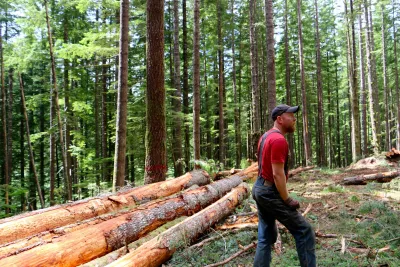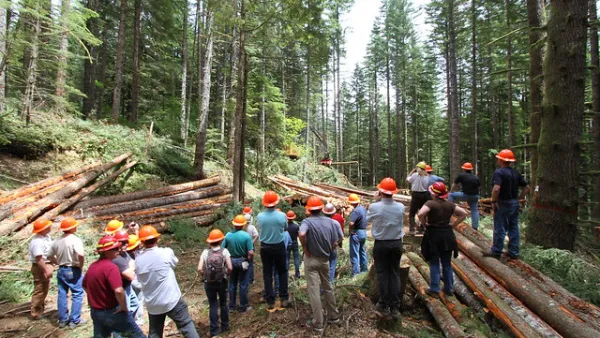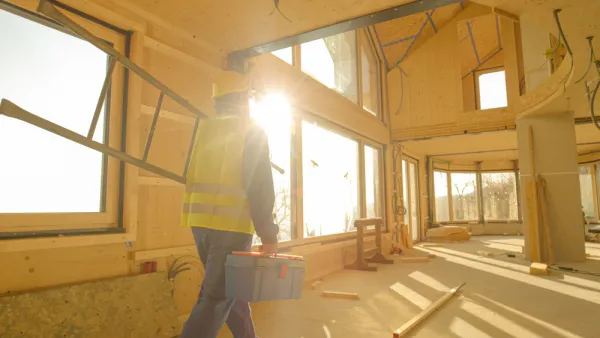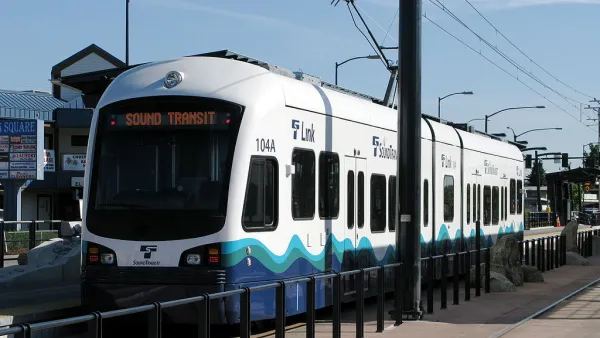Cross-laminated timber offers a multitude of environmental and economic benefits. With the state’s resources and Seattle’s construction needs, the city is the ideal location for mass timber production to take off.

"With vast timber resources and ready for retrofit facilities, the Pacific Northwest has an opportunity to lead a revolution in sustainable building and with the major challenges Seattle is facing around housing affordability and homelessness, our city can and should be at the center of demand for mass timber," writes Conor Bronsdon.
Cross-laminated timber is an ideal alternative to steel and concrete, argues Bronsdon. It performs well as a construction material, can be assembled quickly and easily at construction sites, and requires much less energy for production than steel.
Bronsdon notes that developments at the state and national levels are making cross-laminated timber a more viable option:
The passage of the Timber Innovation Act, officially signed into law in December as part of the national Farm Bill, is a big step for incentivizing the use of CLT. One of the most important provisions of the bill is that it provides annual matching grants to advance innovation in wood construction including prioritizing the use of funds to retrofit sawmills in areas of high unemployment.
He says this is an opportunity to revitalize the flagging economies of rural Washington communities dependent on the timber industry. Washington also last year changed its state building code to allow for mass timber to be used in taller buildings.
Bronsdon says that a partnership between environmental groups and the timber industry would encourage sustainable in-state production. "With responsible and economically incentivized forest management, we can change the calculus of deforestation, encourage replanting and continued harvesting as younger and lower grade trees can be used in mass timber products such as CLT."
FULL STORY: Seattle Should Lead on Mass Timber–and Solve Our Housing Crisis

Analysis: Cybertruck Fatality Rate Far Exceeds That of Ford Pinto
The Tesla Cybertruck was recalled seven times last year.

National Parks Layoffs Will Cause Communities to Lose Billions
Thousands of essential park workers were laid off this week, just before the busy spring break season.

Retro-silient?: America’s First “Eco-burb,” The Woodlands Turns 50
A master-planned community north of Houston offers lessons on green infrastructure and resilient design, but falls short of its founder’s lofty affordability and walkability goals.

Test News Post 1
This is a summary

Analysis: Cybertruck Fatality Rate Far Exceeds That of Ford Pinto
The Tesla Cybertruck was recalled seven times last year.

Test News Headline 46
Test for the image on the front page.
Urban Design for Planners 1: Software Tools
This six-course series explores essential urban design concepts using open source software and equips planners with the tools they need to participate fully in the urban design process.
Planning for Universal Design
Learn the tools for implementing Universal Design in planning regulations.
EMC Planning Group, Inc.
Planetizen
Planetizen
Mpact (formerly Rail~Volution)
Great Falls Development Authority, Inc.
HUDs Office of Policy Development and Research
NYU Wagner Graduate School of Public Service




























